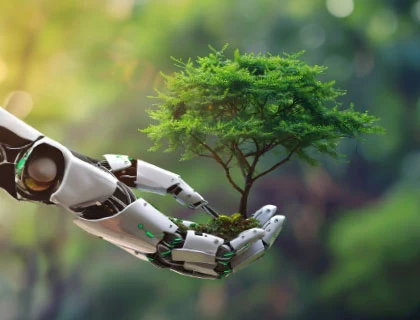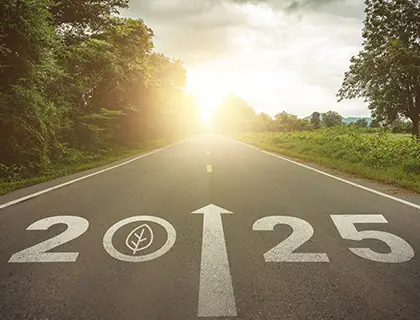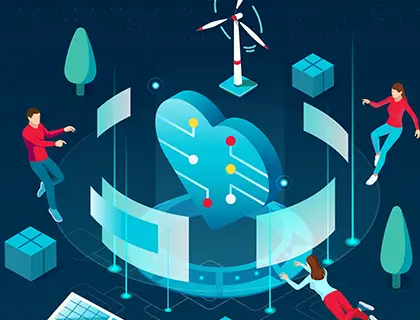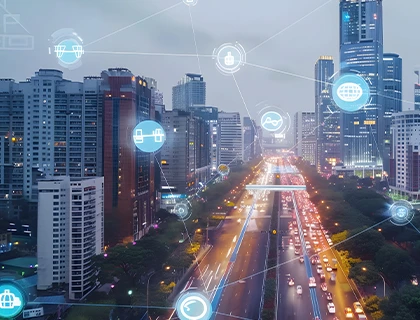
Sustainability is an all-encompassing topic with a myriad of possible executions. How do companies choose where to focus? Three strategies are proving successful for large, tech-driven companies, helping them grow both in profit and sustainably.
6 Mins
9th October 2024
Article
Sustainability, 5G, Digital transformation
The presence of CSR, ESG, and corporate sustainability shows that there is more than one way to approach becoming a sustainable company.
All companies, particularly large corporations, must choose their approach carefully to ensure that the shift is beneficial in both the short and long term. They must select the right strategy for their product and sector or risk engaging in sustainability for sustainability’s sake.
Sustainability initiatives must also have a positive impact on profits. This way, as profits grow, so does the sustainable impact, making it likely that efforts will offset the costs of change in the near term.
Sustainability is also about business resilience and adaptation in a changing world. BlackRock CEO Larry Fink goes so far as to say that the failure to decarbonise will “leave behind the companies that don’t adapt, regardless of what industry they are in.”1
EY and the World Economic Forum identify three paths to corporate sustainability. These distinct strategies suggest which corporations are likely to achieve sustainability through strategic change, with carbon-heavy industries being the least likely to shift in the short term.
EY describes two strategies: one high-risk approach that capitalises on the current climate of corporate ethical scrutiny with fast-to-deploy ESG tactics, and a second approach focused on building sustainability for the long term.2
The World Economic Forum introduces a third strategy, which draws parallels with digital transformation and suggests that companies can undergo a similar wholesale transformation to embed a new way of operating at the core - without negatively impacting profitability. Let’s look at these evidence-based approaches:
EY’s fast-to-deploy strategy suggests that by identifying existing products that meet sustainability criteria and promoting them, corporations can be recognised for their sustainability efforts starting today. Given the urgency of climate change and investor demands for both quick growth and sustainability, this works well. However, EY also warns that this can be a high-risk, superficial reward approach that largely focuses on marketing benefits.
While EY distances itself from this approach, the Kaizen Institute describes a variant of this strategy that can be fitting for some companies. Kaizen suggests that short-term goals get the sustainability wheels turning and allow for projects to be prioritised based on their impact on long-term sustainability and their ability to meet ESG criteria.3 The IATA has found success with this approach by concentrating on gender balance among staff in the aviation industry. By providing equality recommendations to its members, the IATA was able to capture 80 signatories committed to increasing the number of female pilots and senior leaders in the sector.
By focusing on inclusion rather than more challenging projects, such as aviation decarbonisation, the IATA met its ESG targets in just one year.4
Another approach to achieving sustainability is to treat the steps to transformation in the same way as digital transformation, as a step-by-step process driven by technology to achieve efficiency and longevity. This differs from the first strategy by placing greater emphasis on the long term and integrating sustainability into more areas of the business.
Much like digital transformation, this approach sets concurrent strategies in motion, often across multiple areas of the organisation, to achieve transformative change.
Dr. Lee Hui Mien, Singtel’s Head of Environmental Sustainability, emphasises that what is critical in connecting sustainability and digital transformation is fitting the technology to the need, rather than acquiring large-scale technology and hoping for a significant impact.5
Singtel 5G enables this approach by integrating energy-saving features into its core. The Radio Deep Sleep Mode activates cell and sector carriers on demand, resulting in energy savings of around 12% for Singtel.6 For companies undergoing digital transformation, these energy savings can be recognised as a reduction in Scope 3 emissions, potentially eliminating the need to deploy energy-saving strategies elsewhere.
The third approach to sustainability strategy is to fully integrate it into the corporate strategy. This differs from the first two strategies by aligning the business and sustainability strategies as one cohesive entity. Whereas the long and short-term strategies make step changes to become a sustainably operating business, this approach shifts the entire organisation to prioritise sustainability.
APAC corporations are demonstrating leadership in this approach. Alongside the Middle East, these regions lead the world in integrated reporting, which makes no distinction between the financial and non-financial data in annual reports.7
Consultancy firm Accenture has found success in this approach by integrating sustainability into its core business pillars. The company popularised the phrase ‘sustainability is the new digital’ and makes no distinction between its innovation and sustainability strategies; both must support one another. This method acknowledges that sustainability improves the core markers of success for today’s businesses; product desirability, talent acquisition, regulatory resilience, and improved employee productivity.8
As climate change incurs costs from resource price increases, asset loss and employee downtime, this strategy also builds resilience for businesses in an increasingly uncertain market.
A sustainability strategy should be defined by the company's maturity in achieving the core pillars of ESG. Choosing to pivot entirely when the market isn’t ready could be fatal, while choosing to start small could be seen as tokenistic.
Instead, companies should focus on their likely successes: growing the impact of existing activities, using technology to accelerate harm reduction or interlacing the corporate and sustainability strategies.
The cost reduction, data analysis and resilience aspects of digital transformation are well aligned with sustainability and can mean tech-advanced companies will be the ones to excel in the shift toward sustainability.
Are you ready for sustainable, digital transformation?
References:

AI’s green future: Balancing innovation and the environment
AI is paving the way for a sustainable future by improving efficiency and reducing waste. However, its growing adoption has a detrimental environmental impact, increasing not only energy consumption but also resource strain during development and disposal. As AI becomes integral to business operations, balancing innovation with environmental responsibility is vital. Read our eBook to explore how enterprises can navigate AI's green future responsibly.

Sustainability, Transportation, Smart cities

Sustainability, 5G, Manufacturing and logistics

Sustainability

Sustainability, Artificial intelligence and machine learning, Quantum computing

SD-WAN, Sustainability, Artificial intelligence and machine learning, IoT

Sustainability, IoT
Get the latest digest on business and technology trends straight to your inbox.